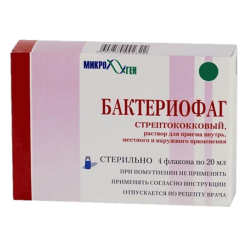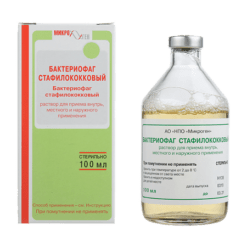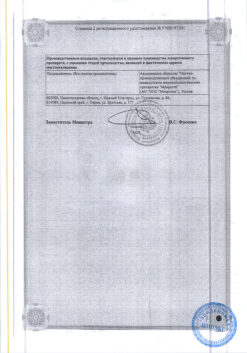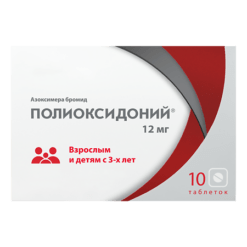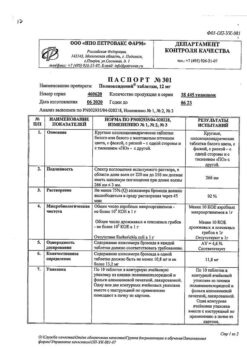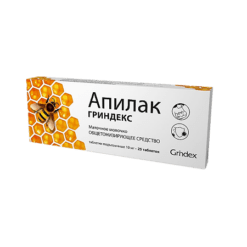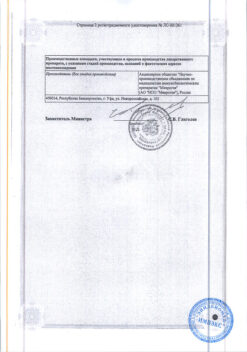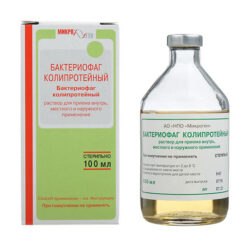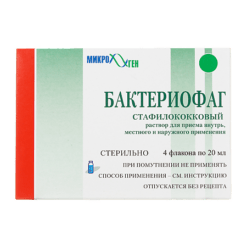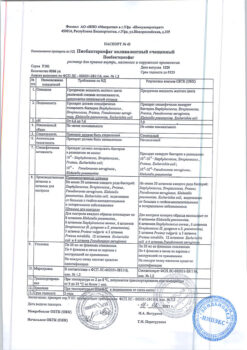No products in the cart.
Actemra concentrate 20 mg/ml (200 mg/10 ml) 10 ml
€1.00
Out of stock
(E-mail when Stock is available)
Description
Actemra is a specific immunosuppressive drug.
The interleukin receptor antagonist-
Indications
Indications
Rheumatoid arthritis with moderate to high levels of activity in adults, either as monotherapy or in combination with methotrexate (MT) and/or other basal anti-inflammatory drugs (BARDs).
Active ingredient
Active ingredient
Composition
Composition
Active substance:
Tocilizumab 80 mg;
Associates:
Polysorbate 80 – 0.5 mg,
sucrose – 50 mg,
sodium hydrophosphate dodecahydrate – q.s,
Sodium dihydrophosphate dihydrate – q.s., water d/i – q.s.
How to take, the dosage
How to take, the dosage
Standard dosing
Aktemra must be diluted by the physician or nurse with sterile 0.9% sodium chloride solution under aseptic conditions. It is recommended to administer by IV drip for at least 1 h.
Rheumatoid arthritis
The drug is administered by IV drip at a dose of 8 mg/kg once every 4 weeks.
Aktemra can be used both in monotherapy and in combination with methotrexate and/or DMARDs.
A dose increase greater than 800 mg per infusion is not recommended in patients with a body weight of >100 kg.
Preparing the solution
Interaction
Interaction
Population pharmacokinetic analysis of clinical trials did not reveal any effect of methotrexate, NSAIDs, or GCS on tocilizumab clearance.
The pharmacokinetic parameters of tocilizumab remain unchanged with concomitant use of other drugs for rheumatoid arthritis (such as antimalarials (chlorquinine and its derivatives), immunosuppressants (azathioprine, leflunomide), folic acid and its derivatives, COX-2 inhibitors (celecoxib) and analgesics (paracetamol, tramadol, codeine and their derivatives).
The simultaneous administration of tocilizumab at a dose of 10 mg/kg and methotrexate at a dose of 10-25 mg once weekly had no clinically significant effect on methotrexate exposure.
There have been no studies investigating the combined use of tocilizumab with other biologic DAAs.
Because the expression of hepatic CYP450 isoenzymes is suppressed by cytokines (e.g., IL-6, which stimulates chronic inflammation), the expression of CYP450 isoenzymes may be affected when therapy with cytokine inhibitors (such as tocilizumab).
In in vitro studies performed on human hepatocyte cultures, IL-6 has been shown to cause decreased expression of the CYP1A2, CYP2C9, CYP2C19 and CYP3A4 isoenzymes. Administration of tocilizumab normalizes the expression of these isoenzymes.
The effect of Actemra on CYP isoenzymes (except CYP2C19 and CYP2D6) is of clinical significance for drugs that are CYP450 substrates, have a narrow therapeutic index and/or for which doses are adjusted individually.
In patients with rheumatoid arthritis, the concentration of simvastatin (a CYP3A4 substrate) decreased by 57% 1 week after a single administration of tocilizumab, which was slightly elevated or similar to that of healthy volunteers.
At the beginning or completion of therapy with Actemra, patients receiving individually adjusted doses of medications that are metabolized by the CYP450 isoenzymes 3A4, 1A2 or 2C9 (e.g., atorvastatin, slow calcium channel blockers, theophylline, warfarin, phenytoin, cyclosporine or benzodiazepines) should be closely monitored. To ensure the therapeutic effect of these drugs, it may be necessary to increase their dosage. Given the long T1/2 of the drug Actemra, its effect on the activity of CYP450 isoenzymes may persist for several weeks after discontinuation of therapy.
Special Instructions
Special Instructions
The brand name of the drug (Actemra) should be listed in the patient’s medical record.
For all indications
Infections: Patients receiving immunosuppressants (including Actemra) have had serious (sometimes fatal) cases of infections. Treatment with Actemra should not be started in patients with active infectious diseases. If serious infections develop, therapy with Actemra should be interrupted until the infection is eliminated. Caution should be exercised when using Actemra in patients with a history of recurrent infectious diseases, as well as concomitant diseases that predispose to the development of infections (e.g., diverticulitis, diabetes mellitus).
Particular caution should be exercised for early detection of serious infectious disease in patients with moderately to highly active rheumatoid arthritis or in patients with pJIA or sJIA who are receiving biologics, as signs or symptoms of acute inflammation may be erased due to suppressed acute phase response. Patients and parents/guardians of children with PUIA or SUIA should be instructed to seek immediate medical attention for any symptoms suggestive of infection in order to provide timely diagnosis and appropriate treatment.
Complications of diverticulitis: cases of diverticular perforation have been reported in patients with rheumatoid arthritis as a complication of diverticulitis. Caution should be exercised when using Actemra in patients with a history of gastrointestinal ulcers or diverticulitis. Patients with signs possibly indicating complicated diverticulitis (abdominal pain) should be immediately examined for early detection of gastrointestinal perforation.
Tuberculosis: Prior to prescribing Actemra, as with other biologics for rheumatoid arthritis, pJIA or sJIA, patients should be screened for latent tuberculosis. If latent tuberculosis is detected, standard antimycobacterial therapy should be given before starting treatment with Actemra.
Contraindications
Contraindications
Hypersensitivity to any component of the drug; active infectious diseases (including tuberculosis);
With caution: recurrent infections in the history; comorbidities predisposing to the development of infections (diverticulitis, diabetes, etc.); active liver disease or liver failure; neutropenia.
Side effects
Side effects
Infections: the following serious infectious diseases have been reported: pneumonia, phlegmon, infections caused by Herpes zoster, gastroenteritis, diverticulitis, sepsis, bacterial arthritis, some with a fatal outcome. Cases of opportunistic infections have been reported.
Gastrointestinal perforations: mainly cases of gastrointestinal perforations were reported as complications of diverticulitis and included pus peritonitis, lower gastrointestinal perforation, fistula and abscess.
Infusion reactions: the adverse reactions most commonly reported during drug administration were episodes of BP elevation. Unwanted reactions that were noted within 24 h after the end of the drug administration were headache and skin reactions (rash, urticaria). These reactions did not lead to restriction of therapy.
The incidence of anaphylaxis was several times higher in patients receiving the drug at a dose of 4 mg/kg than in patients receiving the drug at a dose of 8 mg/kg. Clinically significant hypersensitivity reactions caused by Actemra administration and requiring treatment discontinuation were observed in 0.3% of patients. These reactions were generally observed between the 2nd and 5th infusion of Actemra.
Immunogenicity: antibodies to tocilizumab were detected in 1.6% of patients examined. Five of them had clinically significant hypersensitivity reactions, which led to complete treatment withdrawal. Neutralizing antibodies were detected in 1.1% of patients.
Polyarticular juvenile idiopathic arthritis
Infections: the most common infections were nasopharyngitis and upper respiratory tract infections. The incidence of severe infections as well as infections leading to temporary discontinuation of tocilizumab was significantly higher in patients with body weight
Infusion reactions: infusion-related reactions in patients with pJIA were defined as any event occurring during or within 24 hours of infusion. In 5.9% of patients receiving tocilizumab, infusion reactions were noted immediately during the infusion and in 20.2% of patients, infusion reactions were noted within 24 h of the infusion. Adverse reactions in pUIA patients that occurred during the infusion or within 24 hours of the infusion were not different in nature from those observed in patients with RA and sUIA.
Immunogenicity: Antibodies to tocilizumab without the development of a hypersensitivity reaction were detected in one patient with mass
Systemic Juvenile Idiopathic Arthritis
In general, adverse reactions in patients with SUIA were not different in nature from those seen in patients with rheumatoid arthritis.
Infections: reported serious infections were not different from those seen in patients with RA, with the exception of varicella and otitis media.
Infusion reactions: infusion-related reactions in patients with SSIA were defined as any occurrence occurring during or within 24 hours of infusion. In patients receiving tocilizumab, adverse events included rash, urticaria (a serious event), diarrhea, epigastric discomfort, arthralgia, headache, etc. In
Immunogenicity: antibodies to tocilizumab were detected in 2 of 112 patients examined. One of them developed a hypersensitivity reaction, which led to treatment withdrawal.
Changes in laboratory parameters (hematologic abnormalities)
Neutrophils
Rheumatoid arthritis
A decrease in neutrophil counts below 1Ã109/L was noted in 3.4% of patients administered Actemra at a dose of 8 mg/kg in combination with the DAA, compared with less than 0.1% of patients who received placebo in combination with the DAA. In about half of the cases, a decrease in ACH below 1Ã109/L occurred within 8 weeks of treatment initiation. Decreases in neutrophil counts below 0.5Ã109/L were reported in 0.3% of patients treated with Actemra at a dose of 8 mg/kg in combination with DMARDs.
There was no clear association between a decrease in neutrophil count below 1Ã109/l and the development of serious infectious disease.
Polyarticular juvenile idiopathic arthritis
In routine laboratory monitoring, a decrease in neutrophil count below 1Ã109/l was noted in 3.7% of patients treated with Actemra. There was no association between a decrease in neutrophil count below 1Ã109/l and the development of serious infectious diseases.
Systemic Juvenile Idiopathic Arthritis
In routine monitoring of laboratory values over 12 weeks of therapy, a decrease in neutrophil count below 1Ã109/l occurred in 7% of patients treated with Actemra and was absent in patients receiving placebo.
In the follow-up period, a decrease in neutrophil count below 1Ã109/l was seen in 15% of patients receiving Actemra.
There was no clear association between a decrease in neutrophil count below 1Ã109/l and the development of serious infectious disease.
Platelets
Decreased platelet count below 100Ã103/μL was seen in 1.7% of patients treated with Actemra at a dose of 8 mg/kg in combination with DMARDs and was not associated with bleeding episodes.
Polyarticular Juvenile Idiopathic Arthritis
In routine laboratory monitoring, a decrease in platelet count â¤50 Ã103/μL occurred in 1% of patients treated with Actemra. These changes were not accompanied by the development of bleeding episodes.
Systemic Juvenile Idiopathic Arthritis
In routine monitoring of laboratory parameters during 12 weeks of therapy, a decrease in platelet count â¤100Ã103/μL occurred in 1% of patients, in the follow-up period, a decrease in platelet count below 100Ã103/μL was registered in 3% of patients receiving Aktemra. These changes were not accompanied by the development of bleeding episodes.
Elevated hepatic transaminase activity
Rheumatoid arthritis
The addition to tocilizumab monotherapy of drugs with potential hepatotoxic effects (such as methotrexate) was associated with an increased incidence of increased transaminase activity. Increased liver transaminase activity was not accompanied by clinically significant increase in direct bilirubin level, as well as clinical manifestations of hepatitis or liver failure. In patients who received tocilizumab at a dose of 8 mg/kg in combination with DAAs, the frequency of exceeding IUF of indirect bilirubin was 6.2%. The transient increase in ALT activity (more than 3-fold greater than VGN) observed in adult patients with moderately or highly active pRA (mean disease duration â¥6 months) who had not previously received methotrexate therapy had a more pronounced tendency to return to normal values compared with the rheumatoid arthritis patient population.
Polyarticular juvenile idiopathic arthritis
In routine monitoring of laboratory parameters, increases in ALT or ACT activity â¥3-fold greater than VGN were reported in 3.7% and
Systemic juvenile idiopathic arthritis
In routine monitoring of laboratory parameters during the 12-week treatment period, increases in ALT or AST activity â¥3-fold greater than ICH were reported in 5% and 3% of patients treated with tocilizumab, respectively. In the follow-up period, an increase in ALT or ACT activity â¥3 times the ULN was registered in 12% and 4% of patients receiving tocilizumab, respectively.
Changes in lipid metabolism indices
Rheumatoid arthritis
An increase in lipid metabolism indices (total cholesterol, triglycerides, HDL, LDL) was observed during therapy with Actemra. A steady increase in total cholesterol >6.2 mmol/l (240 mg/dl) was seen in 24% of patients, and a steady increase in LDL â¥4.1 mmol/l (160 mg/dl) in 15% of patients. In the majority of patients, the atherogenicity index did not increase, and the increase in total cholesterol level was effectively corrected by hypolipidemic drugs.
Polyarticular Juvenile Idiopathic Arthritis
In routine laboratory monitoring, an increase in total cholesterol >1.5ÃVGN-2ÃVGN was noted in one patient (0.5%) treated with Actemra. Only one patient (0.5%) with Actemra had an increase in LDL >1.5ÃVGN-2ÃVGN.
Systemic Juvenile Idiopathic Arthritis
Elevated total cholesterol >1.5ÃGN-2ÃGN occurred in 1.5% of patients treated with Actemra. An increase in LDL >1.5ÃVGN-2ÃVGN occurred in 1.9% of patients treated with Actemra.
Post-marketing surveillance
The safety profile of the drug in post-marketing use is consistent with data from clinical studies, with the exception of cases of fatal anaphylaxis reported with the use of Actemra.
Overdose
Overdose
Limited data are available on overdose of Actemra.
In one case of an unintentional overdose of 40 mg/kg in a patient with multiple myeloma, no adverse reactions were noted.
There were also no serious adverse reactions in healthy volunteers who received a single dose of up to 28 mg/kg of Actemra, although neutropenia requiring dose reduction was observed.
Additional information
| Shelf life | 2.5 years |
|---|---|
| Conditions of storage | The drug should be kept out of reach of children, protected from light at 2 ° to 8 ° C; do not freeze. |
| Manufacturer | F. Hoffmann-La Roche Ltd, Switzerland |
| Medication form | solution for infusion |
| Brand | F. Hoffmann-La Roche Ltd |
Related products
Buy Actemra concentrate 20 mg/ml (200 mg/10 ml) 10 ml with delivery to USA, UK, Europe and over 120 other countries.


